
Leveraging SFIA for Enhanced Digital Education and E-Learning Outcomes
o In the rapidly evolving landscape of digital education and e-learning (DEL), educational institutions and corporate training programs are constantly seeking effective methods to enhance learning outcomes and better prepare learners for the workforce.
o One of the most promising approaches in recent years involves augmenting DEL programs with comprehensive skills frameworks, among which the Skills Framework for the Information Age (SFIA) stands out.
o The integration of the Skills Framework for the Information Age (SFIA) into digital education and e-learning (DEL) represents a strategic approach to bridging the gap between educational outcomes and market expectations in the IT sector.
i. The Essence of SFIA
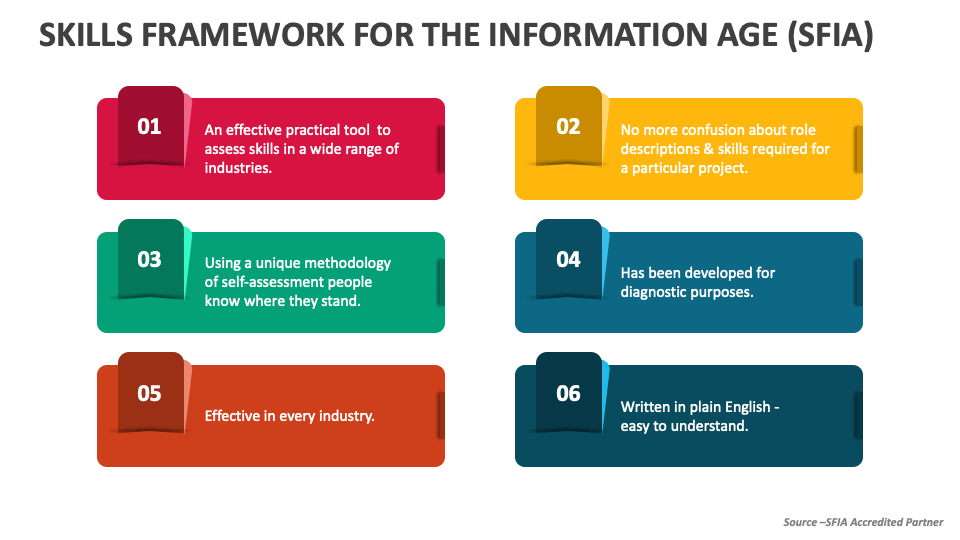
The Skills Framework for the Information Age is a globally recognized model designed to describe and manage the competencies required in the information and communication technologies (ICT) sector. The SFIA framework categorizes skills across several levels, from foundational understanding to strategic expertise, making it an invaluable tool for developing ICT capabilities in learners.
ii. The Rationale for Integrating SFIA into DEL Programs
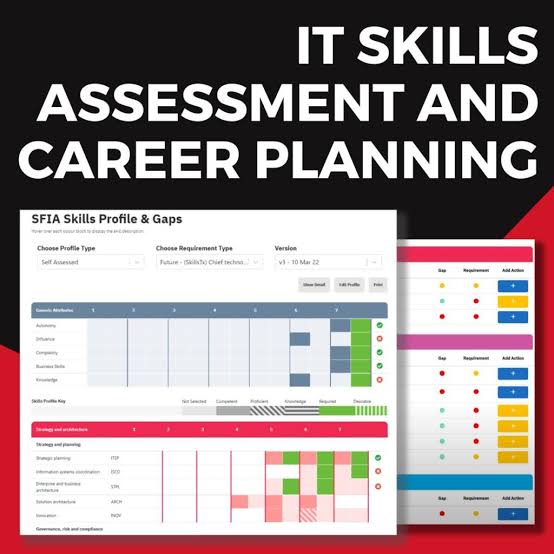
The integration of the SFIA framework into digital education and e-learning (DEL) programs is driven by a fundamental shift in educational paradigms—from a focus on knowledge acquisition to the development of actionable skills. This transition is crucial to meet the changing demands of employers who seek candidates with not just theoretical knowledge, but practical abilities that can contribute to the organization from day one.
A. Alignment with Industry Standards
By embedding the SFIA framework into the curriculum, educational and training programs can ensure their content aligns with industry standards and expectations. This alignment guarantees that learners are acquiring relevant and in-demand skills, enhancing their employability and readiness to tackle real-world challenges.
B. Interactive Learning Environments
Implement learning platforms that allow for adaptive learning paths tailored to the SFIA framework, supporting a personalized education experience that scales with the learner’s progress and skill acquisition.

C. Personalized Learning Paths
The SFIA framework provides a structured approach to identify individual skill gaps and tailor learning objectives accordingly. This personalization facilitates more efficient learning, allowing learners to focus on developing the specific competencies they need for career progression.
D. Enhanced Curriculum Design
Incorporating SFIA into DEL program design encourages educators to construct their curriculum around practical competencies rather than theoretical knowledge. This shift can lead to more engaging and interactive learning experiences, as courses can include real-world projects, case studies, and simulations reflective of actual industry challenges.

E. Industry Collaboration
Close collaboration with industry stakeholders can ensure that the DEL program remains relevant and responsive to changes in technology and skill demands. This can involve guest lectures, real-world case studies, and internship opportunities aligned with SFIA levels.
F. Certification and Badging
Incorporate certification preparation into the DEL programs where applicable, guided by SFIA descriptions. Offer digital badges for skill levels achieved, which learners can display in professional networks and portfolios.
G. Continuous Skill Evaluation
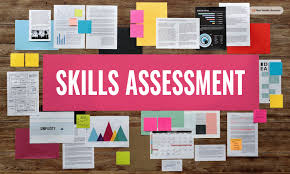
The comprehensive levels and categories of skills within the SFIA framework enable ongoing assessment and documentation of learners’ competencies. This continuous evaluation supports learners in recognizing their proficiency improvements and employers in identifying potential talent with the requisite skill sets.
iii. Implementing the SFIA Framework in DEL Programs
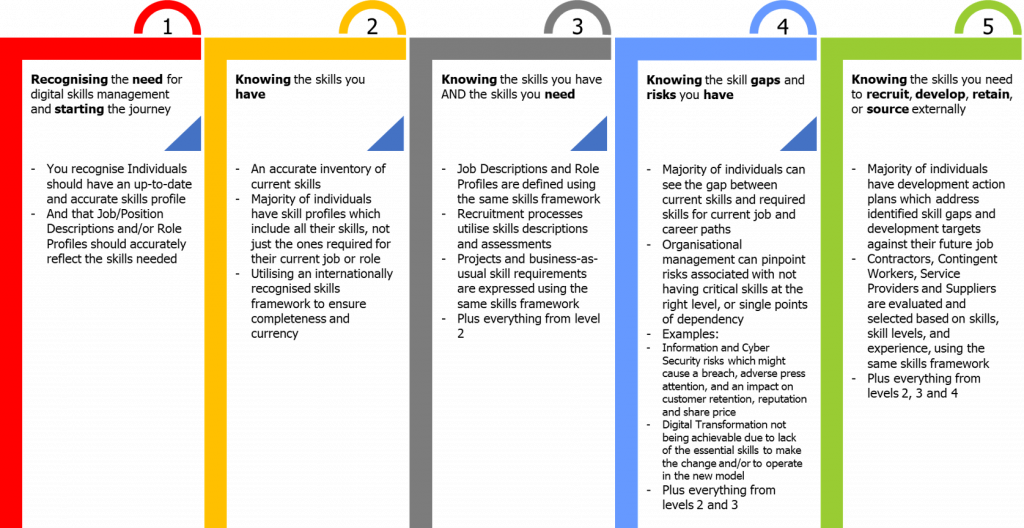
Step 1: Curriculum Mapping
Begin by conducting a thorough analysis of the current curriculum to identify areas where SFIA-based competencies can be integrated. This mapping process should involve collaboration between educators, industry experts, and sometimes even learners themselves.
Step 2: Skill-Based Learning Objectives
Redefine the learning objectives of the course or program to emphasize skill acquisition. Ensure each objective is measurable and aligned with specific SFIA competencies at the appropriate level.

Step 3: Development of Skills-Based Assessments
Design assessments that accurately measure the acquisition of SFIA skills. This might include project-based assignments, simulations, and portfolio assessments, in addition to traditional tests and quizzes.
Step 4: Continuous Improvement
Finally, establish a feedback loop utilizing data from learner assessments and outcomes to continuously refine and enhance the program. This iterative process ensures the program remains relevant and effective in imparting the desired skills.
iv. Augmenting DEL Programs with SFIA: A Practical Approach
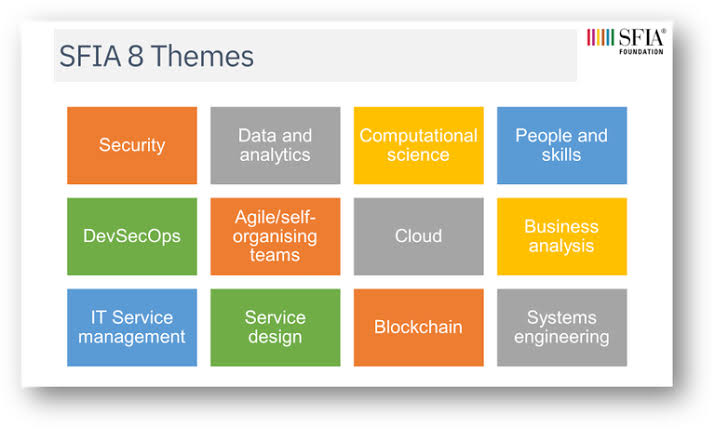
Here’s how DEL programs can be augmented with the SFIA framework:
o Mapping Learning Outcomes to SFIA Skills: Clearly define how each learning module or course contributes to the development of specific SFIA skills.
o Utilizing SFIA Skill Level Benchmarks: Set clear learning objectives aligned with SFIA skill level benchmarks, allowing learners to gauge their progress towards achieving desired skill levels.
o Integration of SFIA-Based Assessments: Incorporate assessments that evaluate learners’ acquisition of the targeted SFIA skills, providing valuable feedback and ensuring learning effectiveness.
o Promoting Continuous Learning: Encourage learners to explore higher SFIA skill levels within the framework, fostering a culture of continuous learning and skill development.
v. Key Advantages of SFIA-Driven DEL Programs
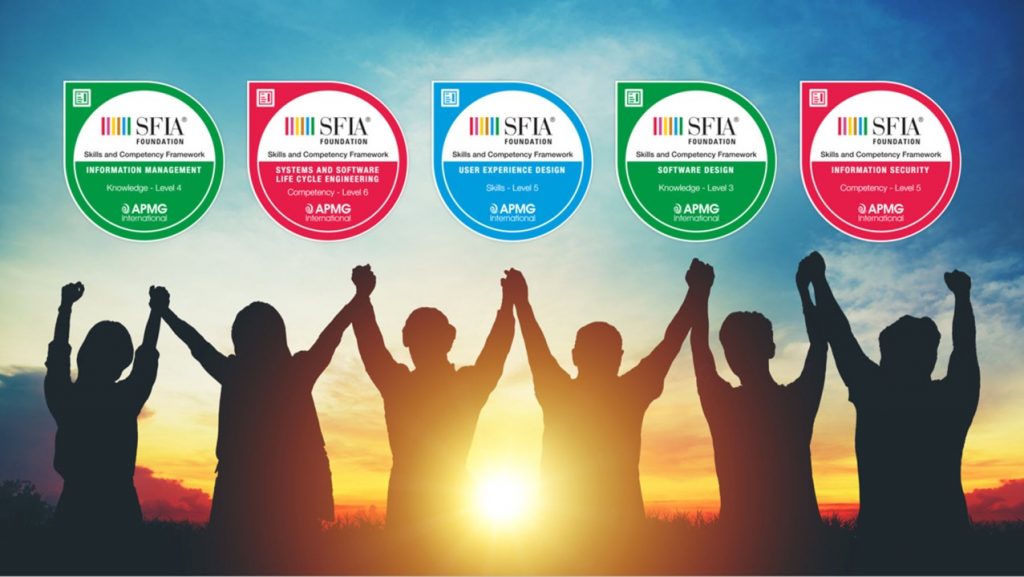
A. Targeted Skill Acquisition: SFIA’s detailed skill descriptions allow educational programs to tailor their offerings more precisely to the needs of the IT industry, ensuring that learners acquire skills that are in direct demand.
B. Progressive Learning Models: Using the SFIA framework, DEL programs can design progressive learning models that logically build from basic to advanced competencies, facilitating lifelong learning and continuous professional development.
C. Increased Learner Employability: Equipping learners with demonstrably valuable SFIA skills enhances their employability and career prospects.
D. Improved Program Credibility: Alignment with the SFIA framework strengthens the credibility of DEL programs, showcasing their effectiveness in developing in-demand skills.
E. Enhanced Program Evaluation: By focusing on measurable skill development, DEL programs can be more effectively evaluated and improved based on learner outcomes.
F. Alignment with Industry Standards: SFIA provides a universally recognized language for defining IT skills and levels, which helps educational institutions align their curriculums with current industry standards, increasing the employability of graduates.
vi. The Future of DEL: Skills-Based Learning for All
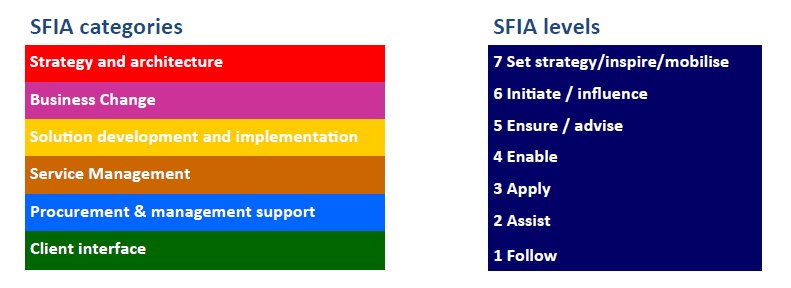
The digital world demands a future-oriented approach to education. By integrating the SFIA framework, DEL programs can evolve from knowledge delivery to skills-based learning, empowering individuals to thrive in the dynamic digital landscape. This not only benefits learners and employers but fosters a more skilled and adaptable workforce, prepared for the challenges and opportunities of the digital age.
vii. Conclusion

o SFIA is a powerful tool, but it’s just one piece of the puzzle.
o DEL programs must also consider factors like accessibility, engagement, and continuous adaptation to learning styles and technological advancements.
o Augmenting DEL programs with the SFIA framework offers a holistic and skills-based approach to digital education and e-learning.
o By integrating SFIA into curriculum design, educators can ensure that learners acquire the essential digital skills needed to succeed in today’s fast-paced and technology-driven world.
o Through clarity, alignment, flexibility, personalization, and assessment, SFIA empowers both learners and educational institutions to navigate the complexities of the digital age with confidence and competence.
o Through this integration, DEL programs cannot only increase their relevance and efficacy but also significantly contribute to the preparedness of graduates entering or advancing in the workforce.
o This approach not only supports the immediate educational community but also serves the broader technological ecosystem by fostering a well-prepared, competently skilled workforce.
viii. Further references
Augmenting DEI Programs with the SFIA FrameworkLinkedIn · John Kleist III7 reactions · 1 month ago
The global skills and competency framework for a digital world …SFIAhttps://sfia-online.org
About SFIA — EnglishSFIAhttps://sfia-online.org › about-sfia › about-sfia
Digital Skills: Frameworks and ProgramsWorld Bankhttps://documents1.worldbank.org › curated › pdf
Review of skills taxonomiesGOV.UKhttps://assets.publishing.service.gov.uk › media
For a Digital Nation- NZRisehttps://nzrise.org.nz › uploads › 2017/12 › Digital…
